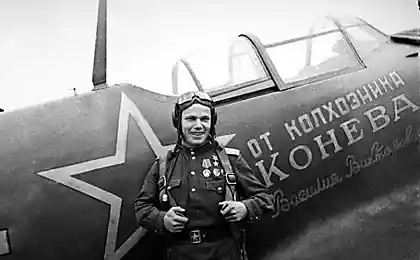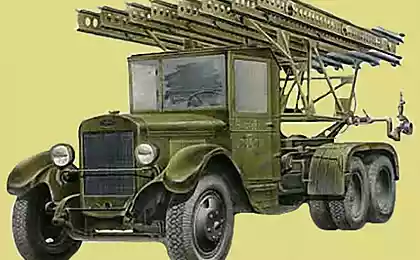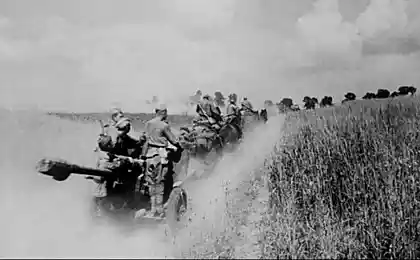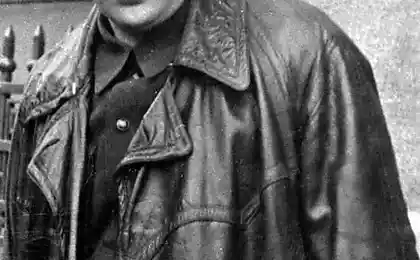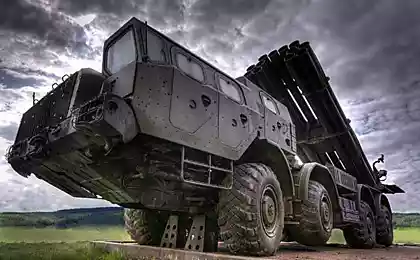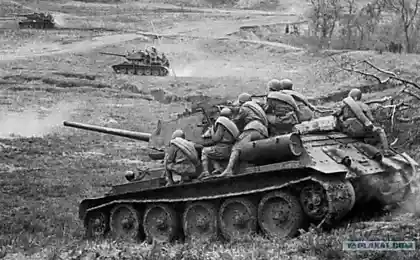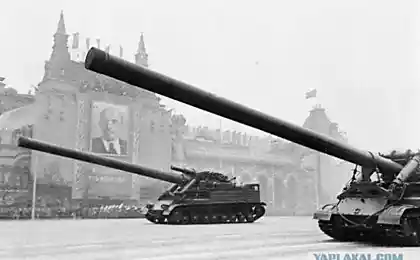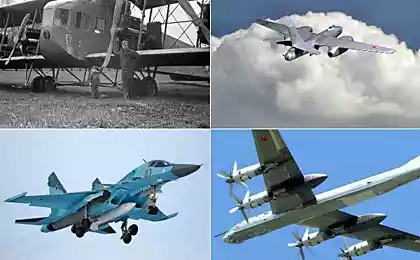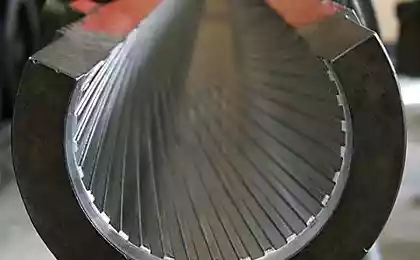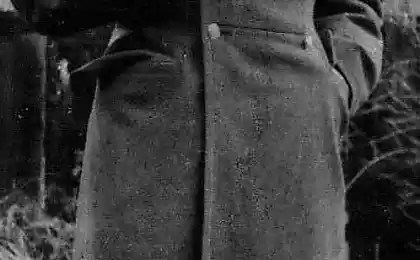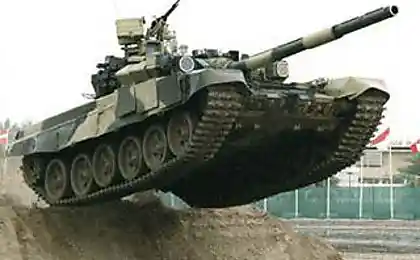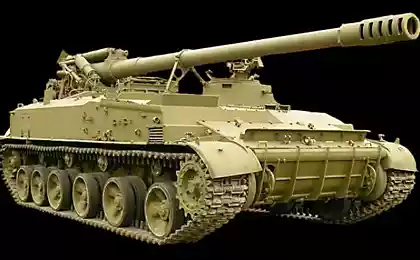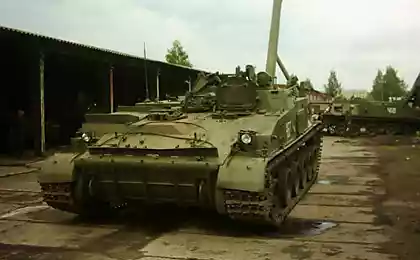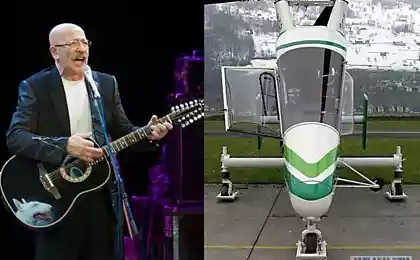1686
Katyusha
Destroyed on the outskirts of Mtsensk Soviet equipment: broken "Katyusha" BM-13 chassis ZIS-6 tractor STZ-5 with anti-aircraft guns shooting tower burned T-34 tank.
This "Katyusha" from the 9 th Guards Mortar Regiment left Mtsensk after the departure of Soviet troops. October 11 in the city to destroy rocket launchers was sent to a group of four T-34 tanks of the 11th Tank Brigade under the command of political instructor - Hero of the Soviet Union Nikolai Vlasenko Polikarpovich (awarded 7.04.1940g). The group managed to break into the city. Tank Vlasenko closest slumped to "Katyusha" and based on the situation (the exact circumstances are not known), political instructor called artillery fire on himself. The tank was killed together with his crew, but units were destroyed, the job is done. This is the official version feat NP Vlasenko.
But there are several versions of the events of this episode of the war: in particular, the version that "Katyusha" were damaged and lead them out of the city was impossible, so tankers destroyed them with fire from the guns of their tanks and machine Vlasenko shot down in combat with the Germans and was not Call the fire itself. It is worth noting that in this picture, and the other pictures of this site are not visible traces of shelling. But be that as it may be mainly the task was complete, though at the cost of many lives of our tankers and intelligence, nominated on the armor.
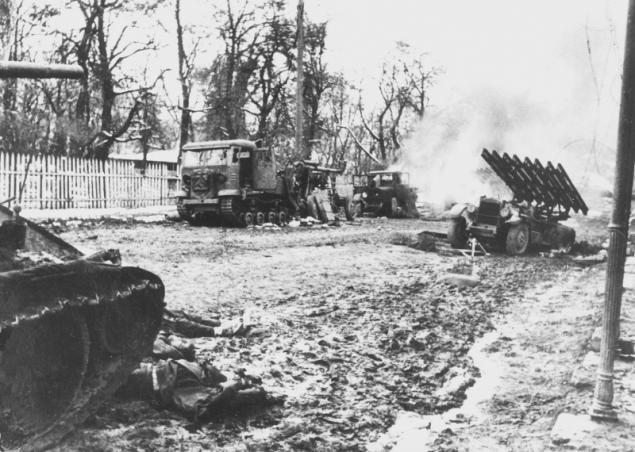
Enemy battered and rocket launchers and ammunition. Since none of the German rocket launcher did not reach the firing range "Katyusha", OKW (as written in the Soviet military-historical literature, "pocketed Nazi arrogance") ordered the construction of a detailed study of Soviet missiles and the establishment of a similar system. The implementation of this task was assigned to the plant 'Waffenfabrik Brunn' (former factories 'Ceska Zbrojovka' in Brno), which until the end of 1943 developed a modified missile. Structurally, these shells were almost an exact copy of the Soviet 82-mm rockets M-8, but the accuracy due to the rotation to be reported stabilizers mounted at an angle to the body of the projectile, was higher than that of the Soviet model (although lower than that of German turbojet min ). Has undergone changes and the design head of the rocket. The electric fuse was put to one of the leading socks that had a positive impact on the reliability of the rocket. Overall, 8 cm Wurfgranate Spreng (such designation has a new type of PC) proved to be more successful than its Soviet prototype. Actually copied itself Soviet PU: 48 guides unusual for German rail type (official name: 8 cm Raketen-Vielfachwerfer)
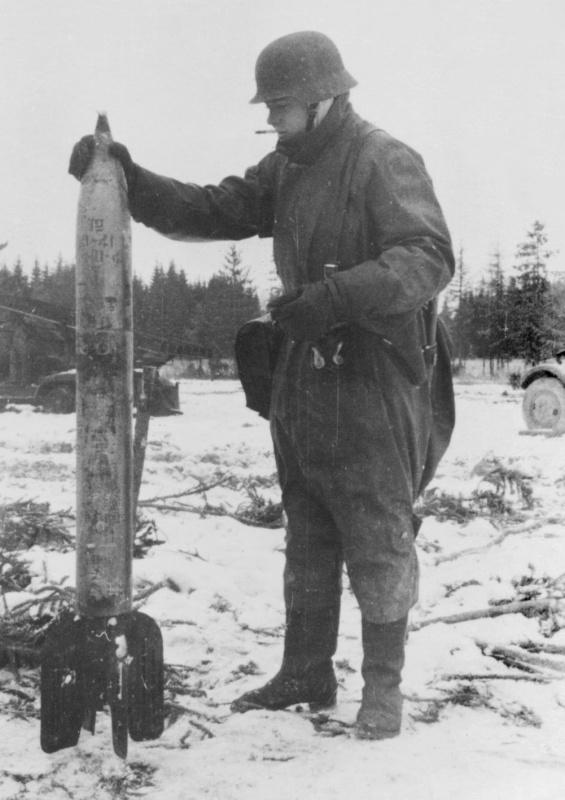
However, the first fuel to the fire of the story poured Erich von Manstein, described in his "Lost Victories" very curious situation:
& Quot; August 22 we reached the Lovat River southeast of Staraya Russa, despite the fact that in this sandy area, almost completely devoid of roads, both infantry motorized divisions had to go most of the way on foot system. Yet housing these days captured 12,000 prisoners, 141 tanks, 246 guns, and hundreds of machine guns, vehicles and other means of transport. Among the trophies were two interesting things. One of them - the brand new battery of German 88-mm anti-aircraft guns of the sample in 1941! Second - this is the first Soviet jet guns seized by German troops. I was particularly interested in the evacuation of the guns. As I was outraged when I was told that the weapon can not be sent to the rear, because someone took off his skates. Who did this? None other than my second adjutant, Major Niemann, which these rays seemed appropriate for our staff bus. He was very upset when he learned that he would have to return the skates and put them back to the old place. & Quot;
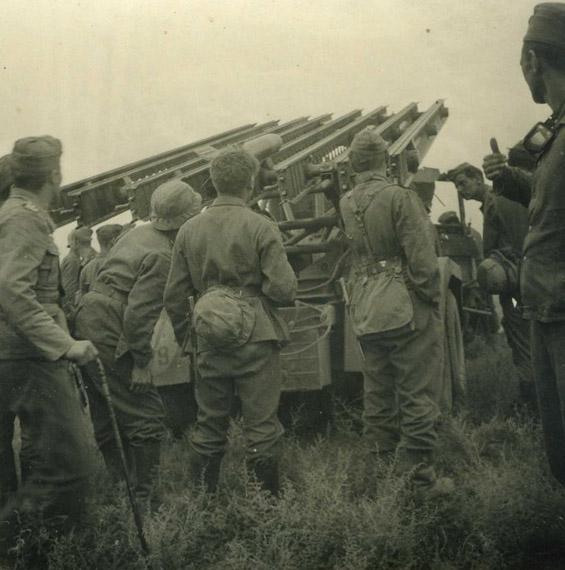
Ford WOT 8 (Ford Canada) BM-13-16
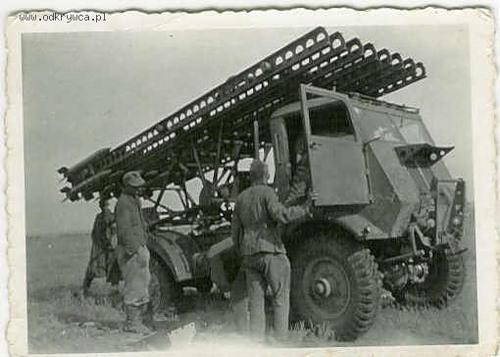
The first "Katyusha", who fell to the Germans in the relative safe, appear three "road rocket launchers" captured September 19, 1941 during the German advance on Vyazminskom direction, plus two units went to the Germans in Orel.
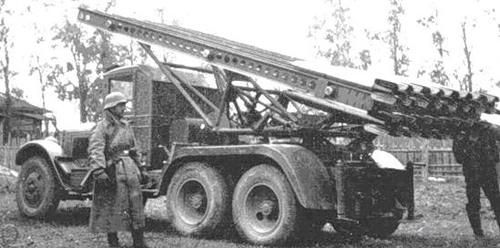
A German soldier inspects the captured Soviet BM-13-16 ("Katyusha") on the chassis of the tractor STZ-5. Considerable quantitative just such an ersatz "Katyusha" was captured by the Germans and their allies in the Barvenkovsky bridgehead during the Battle of Kharkov in May 1942.

BM-13-16 on the base 7107 Chevrolet G
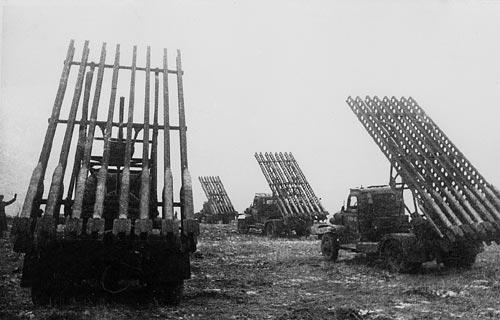
It looked like a volley with ammunition on our powder. Place start easily determined opponent on the trail of a missile. Lendlizovsky powder such traces did not leave.
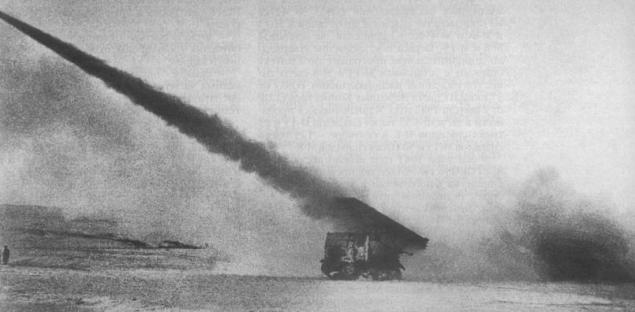
September 19, 1941 during the German advance on Vyazminskom direction as the spoils of war were captured three road rocket launchers; two Germans got Orel
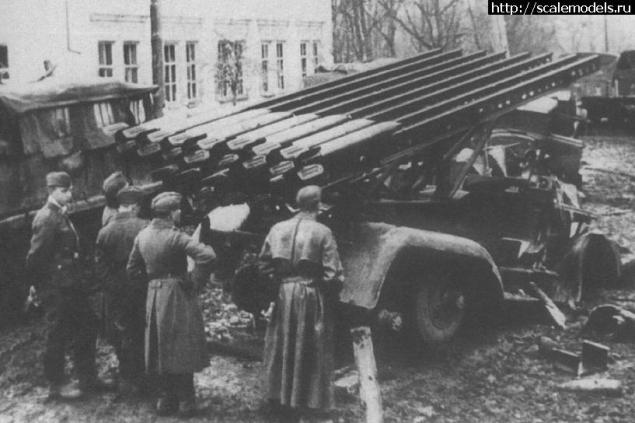
Attaching projectile as M-8 was developed lung chassis T-40, T-60. She had 24 guides, and called BM-8-24. Cruising range is only 600 hours, and then the engine had to be changed, that is sent to the overhaul with the unit. Nevertheless, "Katyusha" on the chassis of T-60 operated at least until 1944.
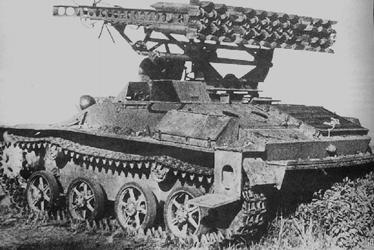
Due to begin deliveries of equipment under Lend-Lease the opportunity to use the truck chassis "Studebaker" and "Ford Marmon." Launcher BM-8-48 on these chassis has become the standard for firing rockets and M-8 was armed guards mortar regiments until the end of the war.
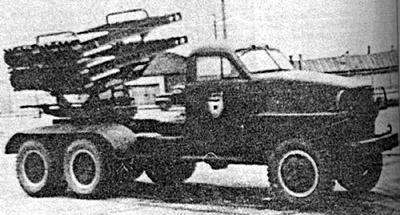
Combat vehicles on the chassis of the T-60 and STZ-5 were adopted September 30, 1941.
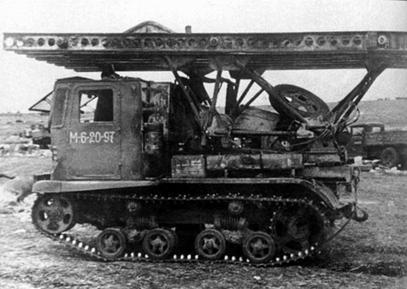
After the start of production of BM-13-16 at different factories in the army up to ten varieties launcher BM-13, making it difficult for personnel training and adversely affects the operation of military equipment. For these reasons, and was developed in April 1943 adopted an unified (normalized) launcher BM-13H. Many argue that the BM-13H is only set to "Studebakers," but it's a moot point.
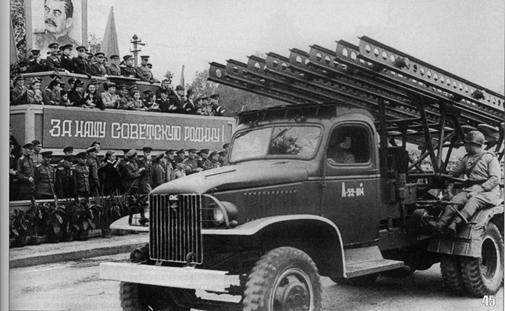
Mountain "Katyusha»
At the end of the war, during the storming of cities, and rockets were used in a single form. Thus, the M-13 missiles were launched including a captured German machine-gun machine, and M-31 - from the factory wooden ukuporok.

48 chargers 80mm launchers based semi-tracked armored SdKfz 4 and captured the French semi-tracked armored car SOMUA MCL began arriving in rocket artillery divisions of the Waffen SS at the end of the war. In all there were not more than twenty such facilities.
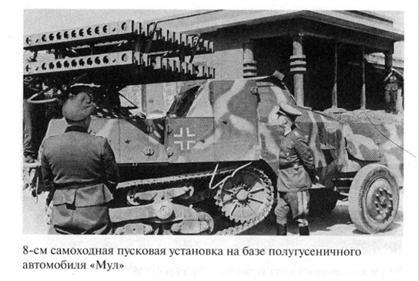
Next, I will not even comment, fascists and Nazis have.
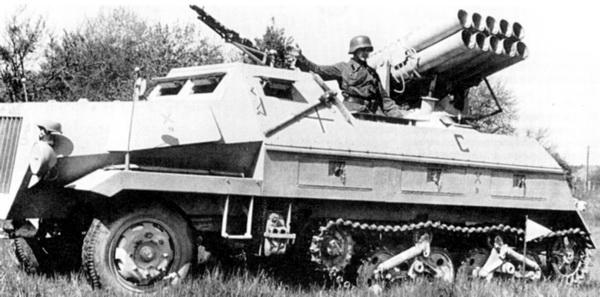
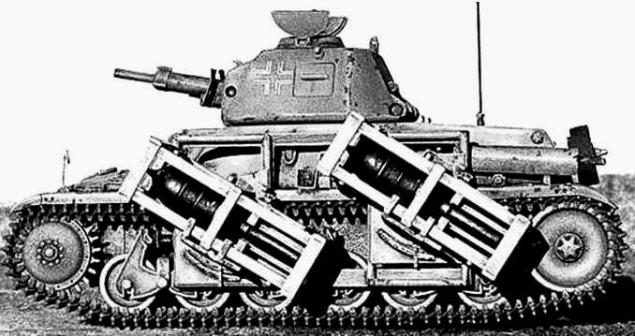
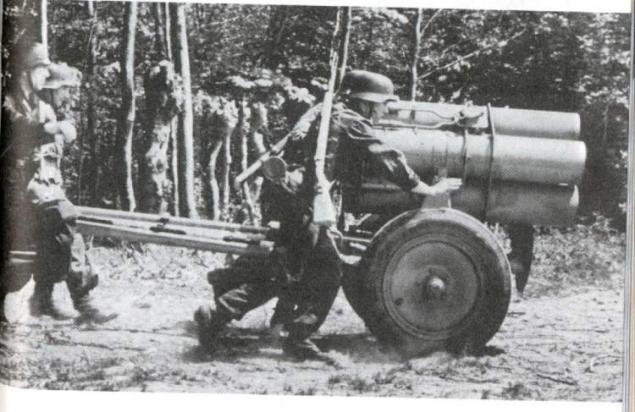
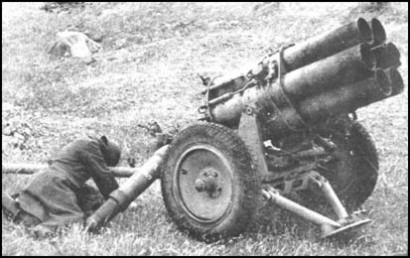
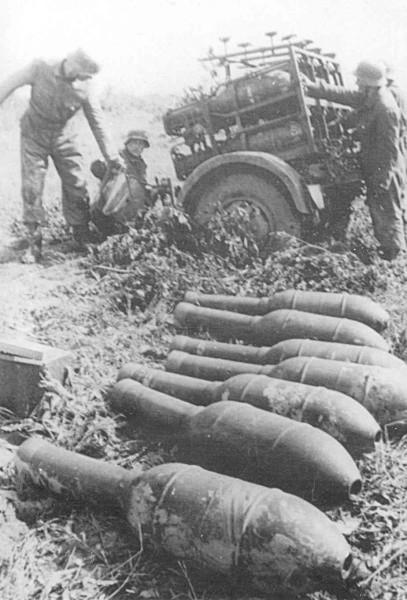
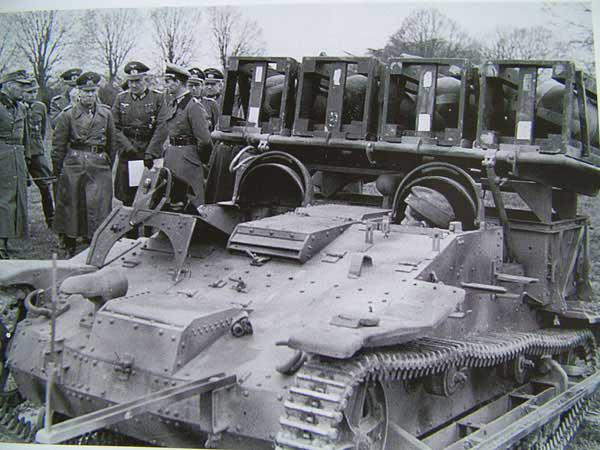
This "Katyusha" from the 9 th Guards Mortar Regiment left Mtsensk after the departure of Soviet troops. October 11 in the city to destroy rocket launchers was sent to a group of four T-34 tanks of the 11th Tank Brigade under the command of political instructor - Hero of the Soviet Union Nikolai Vlasenko Polikarpovich (awarded 7.04.1940g). The group managed to break into the city. Tank Vlasenko closest slumped to "Katyusha" and based on the situation (the exact circumstances are not known), political instructor called artillery fire on himself. The tank was killed together with his crew, but units were destroyed, the job is done. This is the official version feat NP Vlasenko.
But there are several versions of the events of this episode of the war: in particular, the version that "Katyusha" were damaged and lead them out of the city was impossible, so tankers destroyed them with fire from the guns of their tanks and machine Vlasenko shot down in combat with the Germans and was not Call the fire itself. It is worth noting that in this picture, and the other pictures of this site are not visible traces of shelling. But be that as it may be mainly the task was complete, though at the cost of many lives of our tankers and intelligence, nominated on the armor.

Enemy battered and rocket launchers and ammunition. Since none of the German rocket launcher did not reach the firing range "Katyusha", OKW (as written in the Soviet military-historical literature, "pocketed Nazi arrogance") ordered the construction of a detailed study of Soviet missiles and the establishment of a similar system. The implementation of this task was assigned to the plant 'Waffenfabrik Brunn' (former factories 'Ceska Zbrojovka' in Brno), which until the end of 1943 developed a modified missile. Structurally, these shells were almost an exact copy of the Soviet 82-mm rockets M-8, but the accuracy due to the rotation to be reported stabilizers mounted at an angle to the body of the projectile, was higher than that of the Soviet model (although lower than that of German turbojet min ). Has undergone changes and the design head of the rocket. The electric fuse was put to one of the leading socks that had a positive impact on the reliability of the rocket. Overall, 8 cm Wurfgranate Spreng (such designation has a new type of PC) proved to be more successful than its Soviet prototype. Actually copied itself Soviet PU: 48 guides unusual for German rail type (official name: 8 cm Raketen-Vielfachwerfer)

However, the first fuel to the fire of the story poured Erich von Manstein, described in his "Lost Victories" very curious situation:
& Quot; August 22 we reached the Lovat River southeast of Staraya Russa, despite the fact that in this sandy area, almost completely devoid of roads, both infantry motorized divisions had to go most of the way on foot system. Yet housing these days captured 12,000 prisoners, 141 tanks, 246 guns, and hundreds of machine guns, vehicles and other means of transport. Among the trophies were two interesting things. One of them - the brand new battery of German 88-mm anti-aircraft guns of the sample in 1941! Second - this is the first Soviet jet guns seized by German troops. I was particularly interested in the evacuation of the guns. As I was outraged when I was told that the weapon can not be sent to the rear, because someone took off his skates. Who did this? None other than my second adjutant, Major Niemann, which these rays seemed appropriate for our staff bus. He was very upset when he learned that he would have to return the skates and put them back to the old place. & Quot;

Ford WOT 8 (Ford Canada) BM-13-16

The first "Katyusha", who fell to the Germans in the relative safe, appear three "road rocket launchers" captured September 19, 1941 during the German advance on Vyazminskom direction, plus two units went to the Germans in Orel.

A German soldier inspects the captured Soviet BM-13-16 ("Katyusha") on the chassis of the tractor STZ-5. Considerable quantitative just such an ersatz "Katyusha" was captured by the Germans and their allies in the Barvenkovsky bridgehead during the Battle of Kharkov in May 1942.

BM-13-16 on the base 7107 Chevrolet G

It looked like a volley with ammunition on our powder. Place start easily determined opponent on the trail of a missile. Lendlizovsky powder such traces did not leave.

September 19, 1941 during the German advance on Vyazminskom direction as the spoils of war were captured three road rocket launchers; two Germans got Orel

Attaching projectile as M-8 was developed lung chassis T-40, T-60. She had 24 guides, and called BM-8-24. Cruising range is only 600 hours, and then the engine had to be changed, that is sent to the overhaul with the unit. Nevertheless, "Katyusha" on the chassis of T-60 operated at least until 1944.

Due to begin deliveries of equipment under Lend-Lease the opportunity to use the truck chassis "Studebaker" and "Ford Marmon." Launcher BM-8-48 on these chassis has become the standard for firing rockets and M-8 was armed guards mortar regiments until the end of the war.

Combat vehicles on the chassis of the T-60 and STZ-5 were adopted September 30, 1941.

After the start of production of BM-13-16 at different factories in the army up to ten varieties launcher BM-13, making it difficult for personnel training and adversely affects the operation of military equipment. For these reasons, and was developed in April 1943 adopted an unified (normalized) launcher BM-13H. Many argue that the BM-13H is only set to "Studebakers," but it's a moot point.

Mountain "Katyusha»
At the end of the war, during the storming of cities, and rockets were used in a single form. Thus, the M-13 missiles were launched including a captured German machine-gun machine, and M-31 - from the factory wooden ukuporok.

48 chargers 80mm launchers based semi-tracked armored SdKfz 4 and captured the French semi-tracked armored car SOMUA MCL began arriving in rocket artillery divisions of the Waffen SS at the end of the war. In all there were not more than twenty such facilities.

Next, I will not even comment, fascists and Nazis have.







